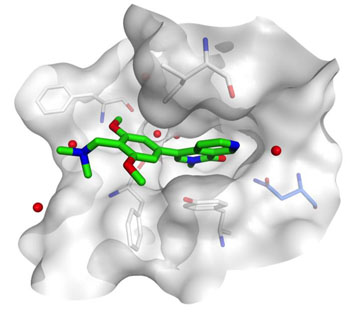Success of Anti-Leukemia Compound Expected to Boost Drug Development Efforts
By LabMedica International staff writers
Posted on 18 Jul 2016
Cancer researchers have identified the active site of a protein required for growth and spread of the blood cancer acute myeloid leukemia (AML), and have designed a drug that blocks the site and suppresses the proliferation of mouse and human AML cell lines in vitro.Posted on 18 Jul 2016
AML is a cancer of the myeloid line of blood cells, characterized by the rapid growth of abnormal white blood cells that accumulate in the bone marrow and interfere with the production of normal blood cells. The symptoms of AML are caused by replacement of normal bone marrow with leukemic cells, which causes a drop in red blood cells, platelets, and normal white blood cells. Symptoms include fatigue, shortness of breath, easy bruising and bleeding, and increased risk of infection. AML progresses rapidly and is typically fatal within weeks or months if left untreated.

Image: An artist’s concept of how a candidate drug fits precisely in BRD9\'s deep bromodomain binding pocket. In preclinical tests, the drug\'s binding prevented AML cells from proliferating (Photo courtesy of Vakoc Lab, Cold Spring Harbor Laboratory).
Investigators at Cold Spring Harbor Laboratory (NY, USA) and their colleagues at the biopharmaceutical company Boehringer Ingelheim (Ingelheim, Germany) reported in the July 4, 2016, online edition of the journal Nature Chemical Biology that AML cells required the BRD9 (Bromodomain-containing protein 9) subunit of the SWI−SNF chromatin-remodeling complex to sustain transcription of the MYC oncogene and the rapid cell proliferation that it caused.
The investigators derived small-molecule inhibitors of the BRD9 bromodomain that selectively suppressed the proliferation of mouse and human AML cell lines. To establish these effects as on-target, they engineered a bromodomain-swap allele of BRD9 that retained functionality despite a radically altered bromodomain pocket. Expression of this allele in AML cells conferred resistance to the antiproliferative effects of the compound series, thus establishing BRD9 as the relevant cellular target.
"We were of course pleased with these results," said senior author Dr. Christopher Vakoc, an associate professor at Cold Spring Harbor Laboratory. "But we set an even higher bar. We wanted to be able to show, unambiguously, how the drug worked - we wanted to prove that its target in AML cells was the bromodomain of the BRD9 protein. As the age of precision medicine begins, this is an important issue, a matter of sink or swim for some candidate drugs. Here we have described a simple new approach that can unambiguously assign the therapeutic effect of a drug to a single binding site."
Related Links:
Cold Spring Harbor Laboratory
Boehringer Ingelheim














